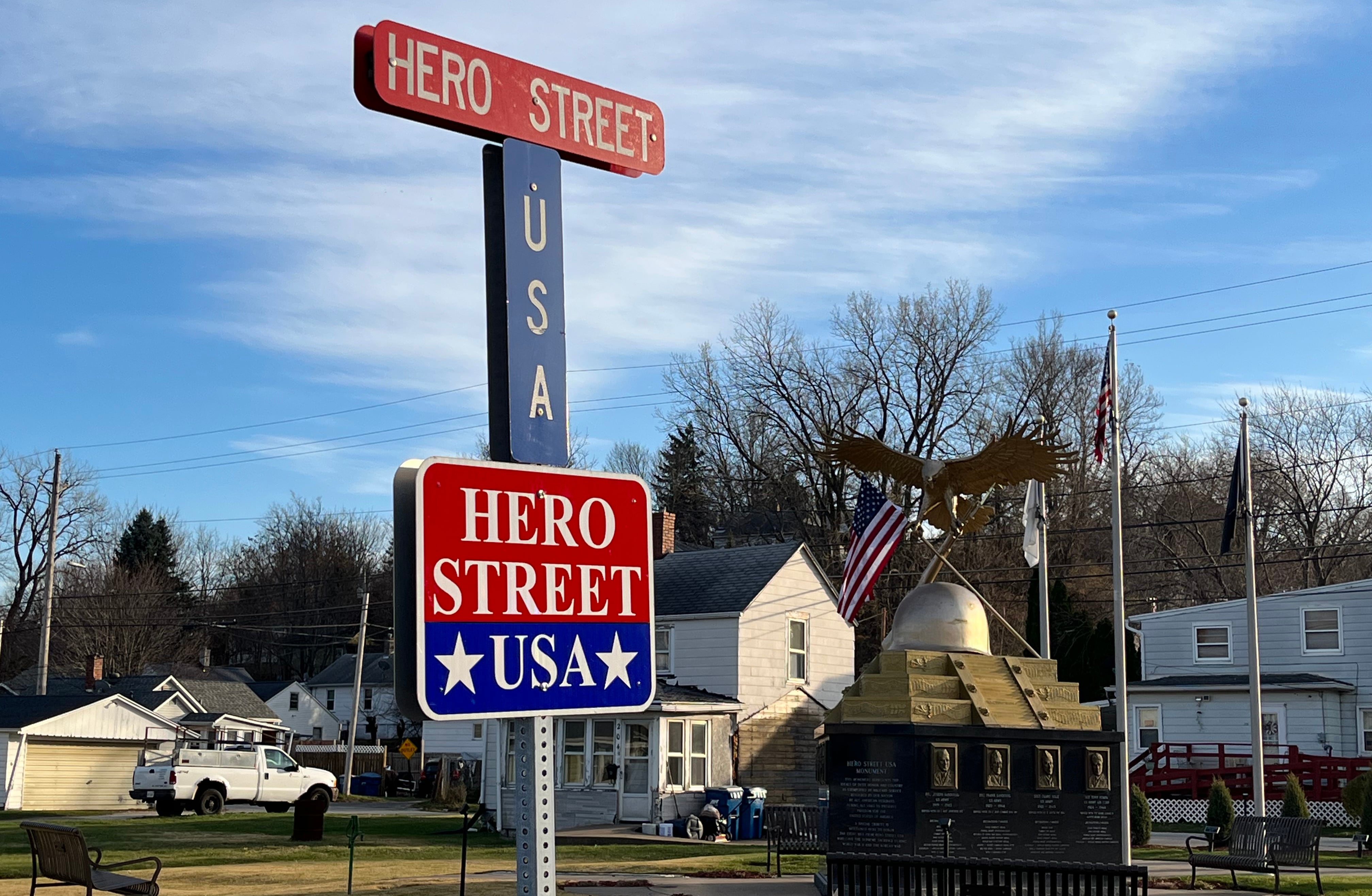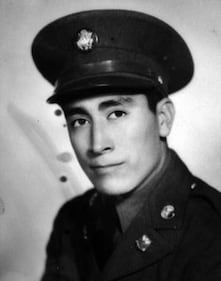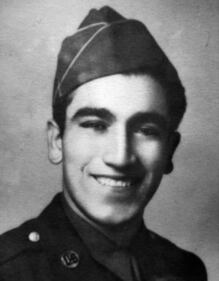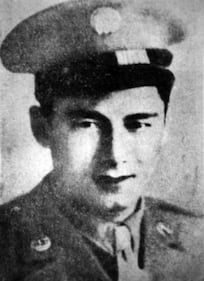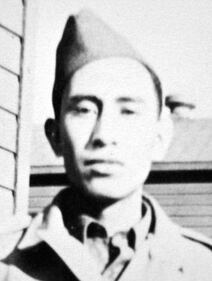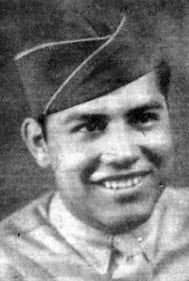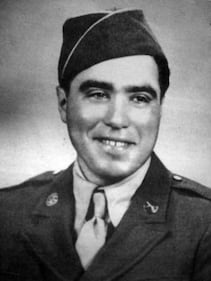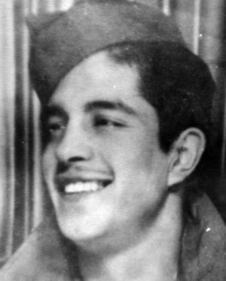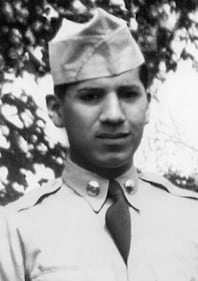Pulling onto Second Street in Silvis, Illinois, the whistles and churns of passing trains are an oddly rhythmic occurrence from the nearby rail yard.
A couple of homes have American flags outside, another has a statue of the Virgin Mary in the yard. There’s a small park with a jungle gym for kids. Local dive Porkie’s sells what is perhaps the region’s best tenderloin a few buildings down, and a small tortilla shop makes chips relied upon by local grocery chains.
But unlike other streets, this particular road in this particular Midwest town has a unique place in military — and Latino — history.
The Department of Defense once reported that more people joined the military from Second Street in Silvis than any other street of comparable size — only a block-and-a-half long. Seventy-eight men from 35 local families served during World War II and the Korean War.
City officials in 1969 renamed Second Street to “Hero Street” in honor of the neighborhood’s eight boys who died in combat and dozens of other veterans — the sons of Mexican immigrants, or immigrants themselves.
Image 0 of 8
Because the Pentagon does not keep block-by-block data on those who served, proving such a claim today is nearly an impossible task. Read into the Congressional Record in November 1983 by Rep. Lane Evans (D-Ill.), local and national media outlets have repeated the line for decades.
Today, Latinos are the fastest-growing demographic to enlist in the military, according to a 2023 Pentagon briefing. Still, those recruits remain underrepresented among the non-commissioned and general officer corps. Nearly 1 in 5 Americans identify as Hispanic or Latino, but just 9% of Latinos are commissioned as officers in the military, according to the briefing.
In recent years, lawmakers have resisted efforts by senior military leaders to expand opportunities to make the military look more like the citizens it defends. For example, during his confirmation hearing for chairman of the Joint Chiefs of Staff, Gen. CQ Brown was criticized for his efforts to make the Air Force’s pilot demographics more representative of national averages, including Latino airmen.
Leonard Gonzales, vice chairman of the Military Affairs Committee of LULAC, a Latino civil rights group, said those criticisms may have missed the point. After serving in the military, Gonzales worked as a civilian director of diversity and equal opportunity in the Air Force.
“Diversity is a practical, pragmatic thing that the nation experiences,” he said. “It is the reality of sheer demographics. … You have to include those underserved communities and bring them into the workforce, military or civilian.
“If we continue to recruit the same group of people over and over again, and those numbers are dwindling, where will you be as a competitive nation?”
Hero Street, with its distinction of military service, raises the question of why so many men from this particular street felt that fighting, and even dying, in uniform was one of the only ways they would be recognized as Americans?
One of the boys’ brothers, Tanilo Sandoval, 98, an Army veteran, perhaps most directly articulated this sentiment.
“They weren’t Mexican Americans,” he said. “They were just Mexicans. We became Mexican Americans after World War II.”
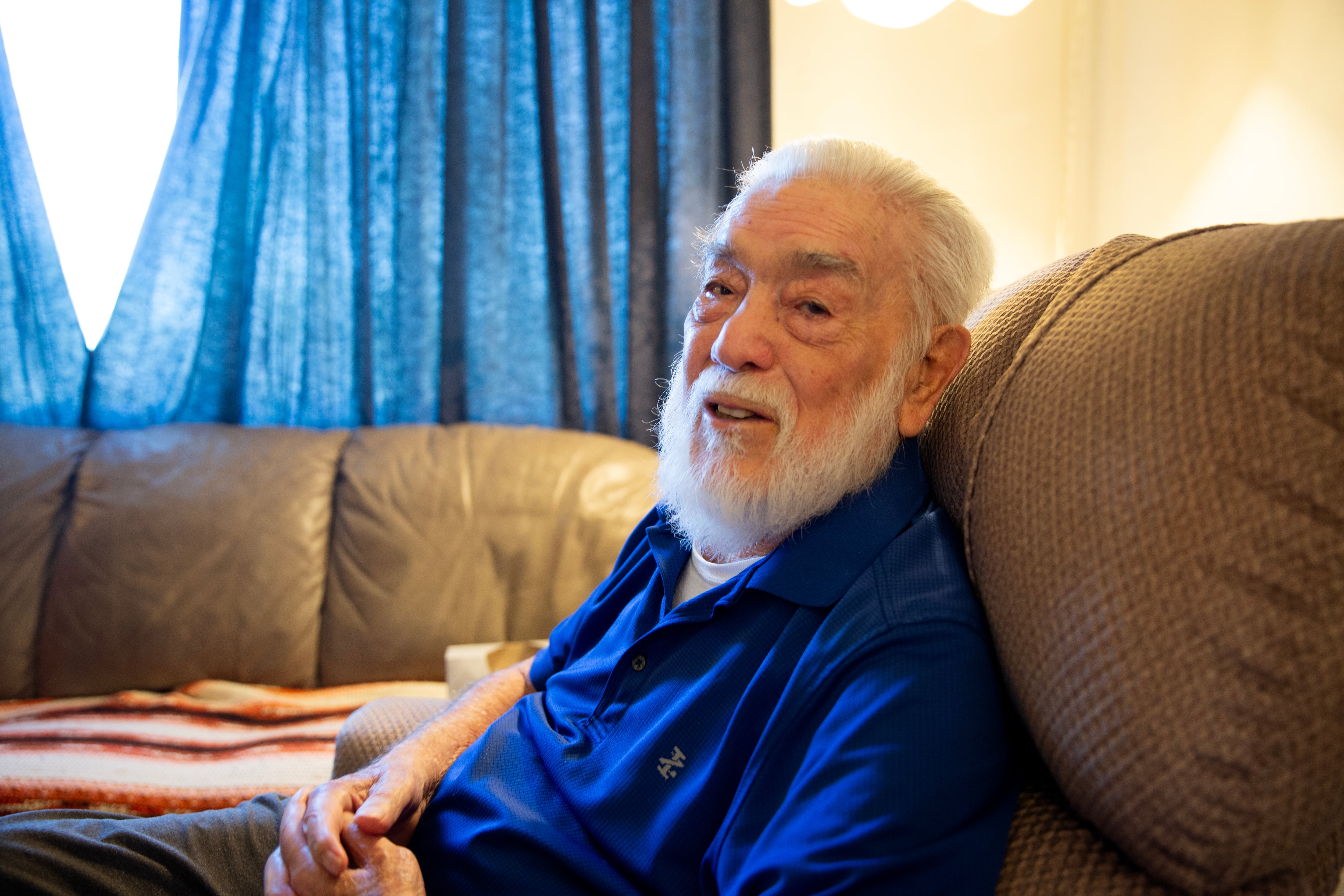
La Revolucíon to La Yarda
In the early 20th century, most indigenous and mestizo, or multi-ethnic, Mexicans found themselves stuck between the immovable object of economic inequality and the unstoppable force of political upheaval.
Before 1910, a quarter of all land in Mexico was owned by U.S. corporations. Around 2,000 elite families owned 87% of Mexico’s rural land, where campesinos — or, peasants — tended to haciendas, or large estates, according to the Wilson Center, a nonpartisan global affairs think tank.
“People in Mexico were stratified largely by race and class, and those two quite often intersected,” said Eladio Bobadilla, a Navy veteran and University of Pittsburgh professor who researches Latino history and social movements. “People who were not white, who were not of Spanish descent, were poor, typically, and things did not get better.”
A popular revolution in 1910 for democratic elections and land reforms pivoted into a counter-revolution by forces of the deposed president in 1913. The United States intervened on behalf of the deposed president, an early example of 20th-century U.S. interventionism against democratically elected leaders in Latin America.
A civil war later ensued, with one of the bloodiest battles taking place near León, Guanajuato, in April 1915.
The fates of León and Silvis — more than 1,900 miles away — became intertwined. The vast majority of original residents on Second Street trace their ancestry to the state of Guanajuato in central Mexico — many from the city of León.
According to the Council on Foreign Relations, nearly 900,000 Mexicans fled to el norte to escape the violence and find opportunities beyond the haciendas. Two industries, Bobadilla said, specifically targeted Mexican laborers: agriculture and railroads.
The immigrants settling in Silvis found jobs on the Rock Island Line, where each family received a boxcar for a home on the rail yard. The boxcar village later became known as la yarda.
‘The Strongest People’
Brian Muños, 56, has a voice that carries. The 20-year Navy veteran says it stems from needing to be heard in a large, extended family.
Muños was raised on Hero Street by his grandmother, Nellie Muños, 100, who regularly gave Catholic blessings to residents and visitors to the street: “In the name of the Father, and of the Son, and of the Holy Spirit: God bless you and your guardian angel watch over you and protect you from all danger and evil at all times. God bless you and your family.”
By the 1970s, the grassy hill where the eight boys who later died and countless others had played was covered with a layer of concrete that a new generation used as a slide.
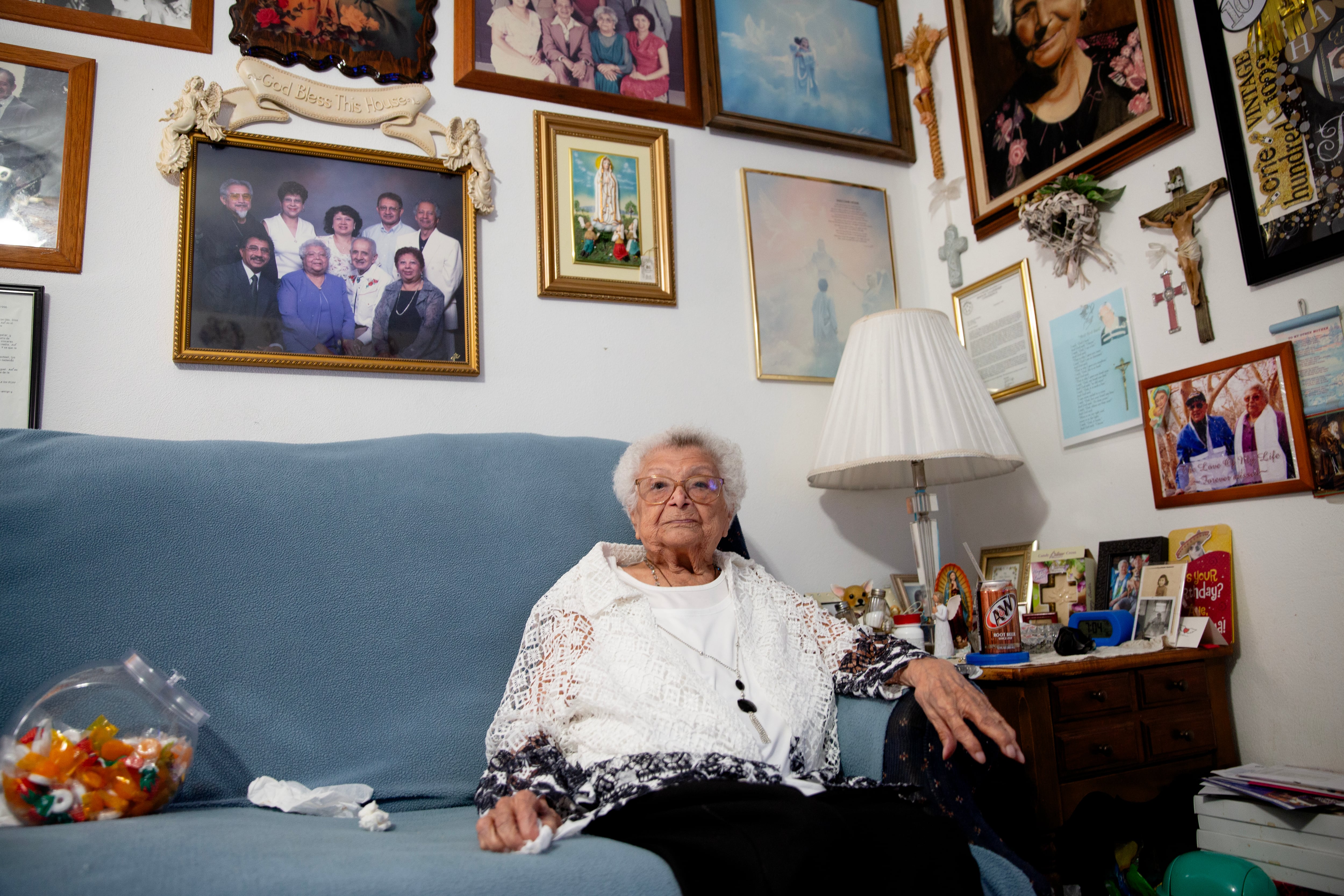
“We were kids that had slides made of cement, so you had to be tough,” he said with a chuckle.
His upbringing, though, paled to the stories he heard growing up.
Families of as many as 10 or more lived in single boxcars. The men worked long, grueling hours. Everyone experienced their first Midwest winter in a metal boxcar without electricity, heat or water. Holding tight to their faith, the immigrants built a Catholic church out of two of the structures.
In 1929, white residents protested that the immigrants did not pay property taxes while living on railroad property. As a result, city officials forced the workers and their families to move their boxcars from la yarda to the dirt street.
A handful of the original boxcar homes still stand, but the street is now paved. High school art students painted stars on the street in front of the eight boys’ original homes in 2011. A staircase leads visitors to a grotto at the top of the hill in the park, where a Bible verse is printed on the wall.
And as years turned into decades, future generations continued to serve — in Vietnam, the Gulf War and the Global War on Terror. In the Muños family, Brian Muños is the ninth to serve.
“When I was in the service, there was no way I could fail, because I’d been taught and cared for by some of the strongest people that I’ve ever known,” he said.
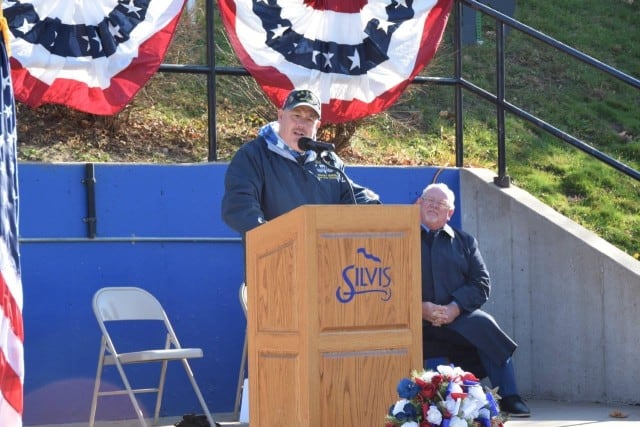
In a later conversation, he elaborated on the meaning of his service.
“Regardless of the generation, from theirs to mine, I think we still all have that same sense of giving and of sacrifice in order to pay back for what we were given, as a people, a family and a community,” he said. “I would only do my very best to prove to everyone that, once we commit to protecting this country, you’re going to get the very best of us.”
Only a few people from Silvis — such as 94-year-old Frank Pompa, a veteran himself — still remember the eight boys who died.
Standing outside his childhood boxcar home in Silvis, Frank pointed to the front room where he had been born. There, his older brother Tony had rigged a hose and bucket to work as a makeshift shower.
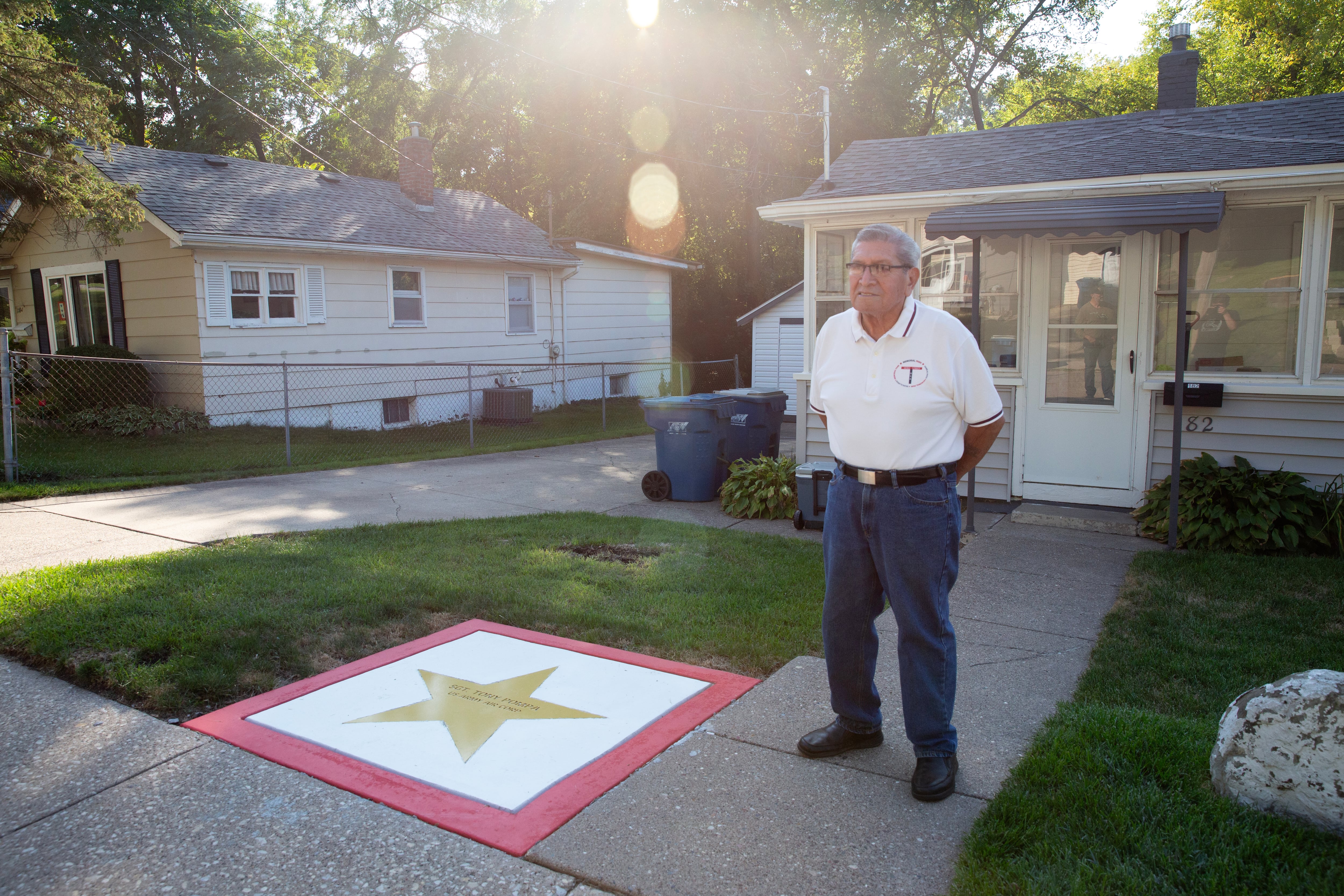
Tony joined the Army Air Forces before World War II at the age of 17. He persuaded a neighbor to pretend to be his parent to enlist. He entered as “Tony Lopez” — and for a time was even buried with that name.
A tailgunner on a B-24 Liberator bomber, Tony flew in a number of aircraft bearing clever monikers, including the “Lurchin Urchin.” Painted on another bomber called “Sinner’s Dream” was a picture of a naked woman wearing “black silk panties,” he wrote to his sister.
“I got myself into a habit of patting her every time before going on a mission, just for luck,” he added in letters provided by the Pompa family.
Tony, 20, crashed in the mountains near Aviano, Italy, in the Lurchin Urchin in January 1944. The other crew members bailed out of the plane. But Tony’s parachute released while still in the bomber, tangling in the crawl space that connected the tail gunner nest to the rest of the aircraft.
Six months later, grief struck Second Street again.
When Tanilo Sandoval’s older brother, Frank Sandoval, received his draft notice, he went to the military without fuss or fanfare. The same went for his other brother, Joseph.
Growing up, Frank worked as a janitor at the local elementary school before he even graduated from it, Tanilo said.
“When they got their first money, they bought my mom her first washing machine,” Tanilo said. “They wired the house for electricity. They put in plumbing.”
Frank served in an engineer battalion to build roads and bridges for troops in India advancing on Japanese positions in occupied-China. Tanilo recalled that, while in the military, Frank was reprimanded for speaking Spanish to other Spanish-speaking recruits.
At the height of fighting, the group was called to defend an airstrip in Myitkyina, Myanmar. They held the airfield, but in June 1944, Frank, 23, died in action less than a month before the Allies seized Myitkyina and sent the battalion back to its regular construction duties.
Then, in October, another boy from Second Street died as Allied forces streamed into Germany.
William “Willie” Sandoval belonged to an unrelated Sandoval family down the street. In September 1944, his regiment was tasked with capturing a bridge in the Dutch city of Nijmegen, behind German lines.
That October, less than a month after the first U.S. troops crossed into Germany, Willie, 21, was reported missing in action along the Netherlands-German border. Official documents differed on whether he was killed in Nijmegen or in an assault on German positions in the woods near Zyfflich, Germany.
As their bodies went home to Second Street, even getting a casket down the road proved a Herculean task.
Melted snow or rainfall regularly made the dirt road a thick layer of mud. The children of Second Street walked on planks to avoid ruining their Sunday best before mass. When families held wakes at home, the carriages bringing the fallen home frequently sank into the unstable earth.
“We could barely get [Tony] in the doorway,” Frank remembered.
Fighting for Recognition
City officials and other community leaders did not immediately come up with the idea of “Hero Street.” Instead, the youth led the charge.
In 1954, Silvis high school senior John Ponciano wrote about his old neighborhood for a school assignment, eventually published in the now-defunct Labor’s Daily newspaper. Ponciano’s brother, Joe, coined the term “Hero Street.”
“If the streets of Silvis, Ill., were named, rather than numbered, there would be one which would surpass the others,” he wrote. “That would be 2nd St., the street which, during the last two wars, valiantly gave up 8 of her young men to die in the name of freedom.”
Then in 1968, Vi Murphy, a reporter for the nearby Moline Dispatch, wrote a feature on the street. By October 1971, she was widely credited as “the first to inform” the area about the sacrifice of the eight boys.
Ponciano eventually wrote an opinion piece in the Moline Dispatch, saying the paper was “erroneous” to give credit to Murphy, and went on to note that the paper had even published his original story in its 1960 Memorial Day edition.
The grief deepened for the families of Second Street in 1945.
Claro Solis returned home on leave in 1944 after joining the Army.
His nephew, Guadalupe “Sonny” Soliz, then 12 years old, rushed to greet him and showed him a drawing of Bambi. Claro encouraged him.
“He said, ‘Keep drawing.’ He said, ‘Don’t give up,’” Sonny, now 91, recalled while at his home, a few blocks away from the old neighborhood. Calligraphy pens, drawings and family photos covered the retired art teacher and Air Force veteran’s walls and tables.

Before leaving the street for the last time, Sonny said Claro made clear his intentions: “Let’s see who can get a gold star for mother.”
Claro, 23, died in the Battle of the Bulge in January 1945. His mother received his Gold Star.
Then there was Peter Masias, 21, who served as a paratrooper in the 17th Airborne Division — known as “The Golden Talons.” The division was selected for Operation Varsity, tasked with jumping behind enemy lines north of Wesel, Germany, to a bridgehead on the Rhine River for the Allies’ major push into Germany.
It was the last full-scale airborne operation of the war. In March 1945, Peter died on the German side of the Rhine during the assault, according to his obituary and service documents.
Joseph Sandoval bought his younger brother, Tanilo Sandoval, his first bicycle. He had helped his brother Frank install the plumbing and electricity in their home before World War II.
“They always had music loud so the whole neighborhood could hear it,” Frank Pompa said outside the old Sandoval home. “They were happy-go-lucky.”
But tragedy after tragedy turned the Sandoval house quiet, he said. Joseph, 26, was originally reported as missing in action in April 1945. The Army eventually changed his status to “killed in action” a year later. His position was overrun on the bank of the Elbe River near Schönebeck, Germany, where he was cut off from the retreat, according to service documents.
Less than a month after his death on May 7, Germany surrendered.
“My mother didn’t just cry, she wailed,” Tanilo said. “She died thinking about them.”
Even as the wars against fascism in the 1940s and communism in the 1950s concluded, the larger Silvis community was slow to accept the veterans of Second Street.
Boys and men from Second Street regularly played baseball at the ball diamonds behind the Silvis Veterans of Foreign Wars post.
“One day they were practicing real hard and a fellow member [of the local post said] come in and get a window pop,” Tanilo Sandoval recalled. “They were all veterans and asked them to join the VFW, so they all put in their applications.”
But post members voted down applications from Mexican American veterans, Tanilo said. While the VFW never had a formal exclusionary policy based on race or ethnicity, the Silvis post managed to keep its membership exclusively “Anglo,” Tanilo said.
“This was a common problem in the post-war period, especially in places where discrimination was rampant,” University of Pittsburgh Professor Eladio Bobadilla said. “Latino veterans created their own advocacy groups in response. … Sometimes they also established their own VFW posts.”
In May 1954, local Latino veterans did just that. The Ybarra-Gomez VFW Post 8890 bears the names of Joseph Gomez from Second Street and Michael Ybarra from the nearby town of Milan. Both men from western Illinois lost their lives fighting in Korea.
In the wood-paneled basement of the post on Veterans’ Day 2022, people ate tostadas and fideo — a Mexican soup with thin, chopped noodles — after a bone-chillingly cold Veterans’ Day ceremony on Hero Street. Frank Pompa sat at the bar with two of his nephews, both Vietnam veterans. The laughter of 20 or so people at the tables filled the room.
The Silvis post eventually closed, its membership, which could have been bolstered by the joining of Mexican veterans, steadily declined.
Joseph Gomez hated getting tagged in touch football, Sonny Soliz said of his childhood friend. On one occasion, Joseph even jumped full throttle into a neighbor’s bushes to avoid being tagged.
“He was daring, strong-minded,” Sonny mused.
That dogged mentality proved vital on the Korean Peninsula in 1951.
On May 16, Chinese and North Korean forces launched a major attack on “Bunker Hill” — where Joseph’s unit was dug in. In the chaos, U.S. defenses “crumbled quickly,” according to the U.S. Army Center of Military History.
With only the flash of grenades lighting the hill, Joseph joined a hastily organized counterattack.
Sustaining injuries in a charge on a machine gun position, Joseph, 21, died 12 days later — the first casualty from Second Street in six years.
Second Street would lose one more soldier to war.
When John Muños and his buddies went to the draft office to inquire about their notices, the clerk at the office told them they could enlist then and there, or wait for their notice. He waited.
That decision may have cost him his life, Sonny said. His buddies who enlisted that day survived Korea, but John put his enlistment on hold.
“One of our friends said Johnny is a lover,” Sonny said. “And that’s exactly what he was. He met a girl from [another town], and he got married. And because of that time of his life, he waited about three weeks.”
In August 1951, military officials used a string of hills, later called “Bloody Ridge,” to put pressure on North Korean troops in an attempt to sway negotiations between the communists and the United Nations.
In the ensuing counterattack, it was unclear what killed John. His body was never recovered.
John Muños died at the age of 23.
In the span of seven years, a street of railroad workers and Mexican immigrants became a street of seven Gold Star families.
After years of organizing, Latinos across the country began breaking barriers in local and federal elections. In 1963, Joe Terronez was elected to the Silvis city council — and was the only supporter of a memorial park on the street.
When a high-ranking Latino official in the Johnson administration helped secure a federal grant to build a park, the city council initially refused. Only after the local chapter of the American G.I. Forum, a Latino veterans group, secured more funds for a city water system did the city council agree to build a park.
Hero Street Memorial Park finally opened in 1971, after the owner of the street’s tortilla shop and another neighbor donated the land.
“It took 10 years to build a park that would take one year for any other,” said Maria Soliz, 86, one of the local leaders of the civil rights group and niece of Claro Solis. Adding insult to injury, Hero Street was the last street in Silvis to be paved in 1975.
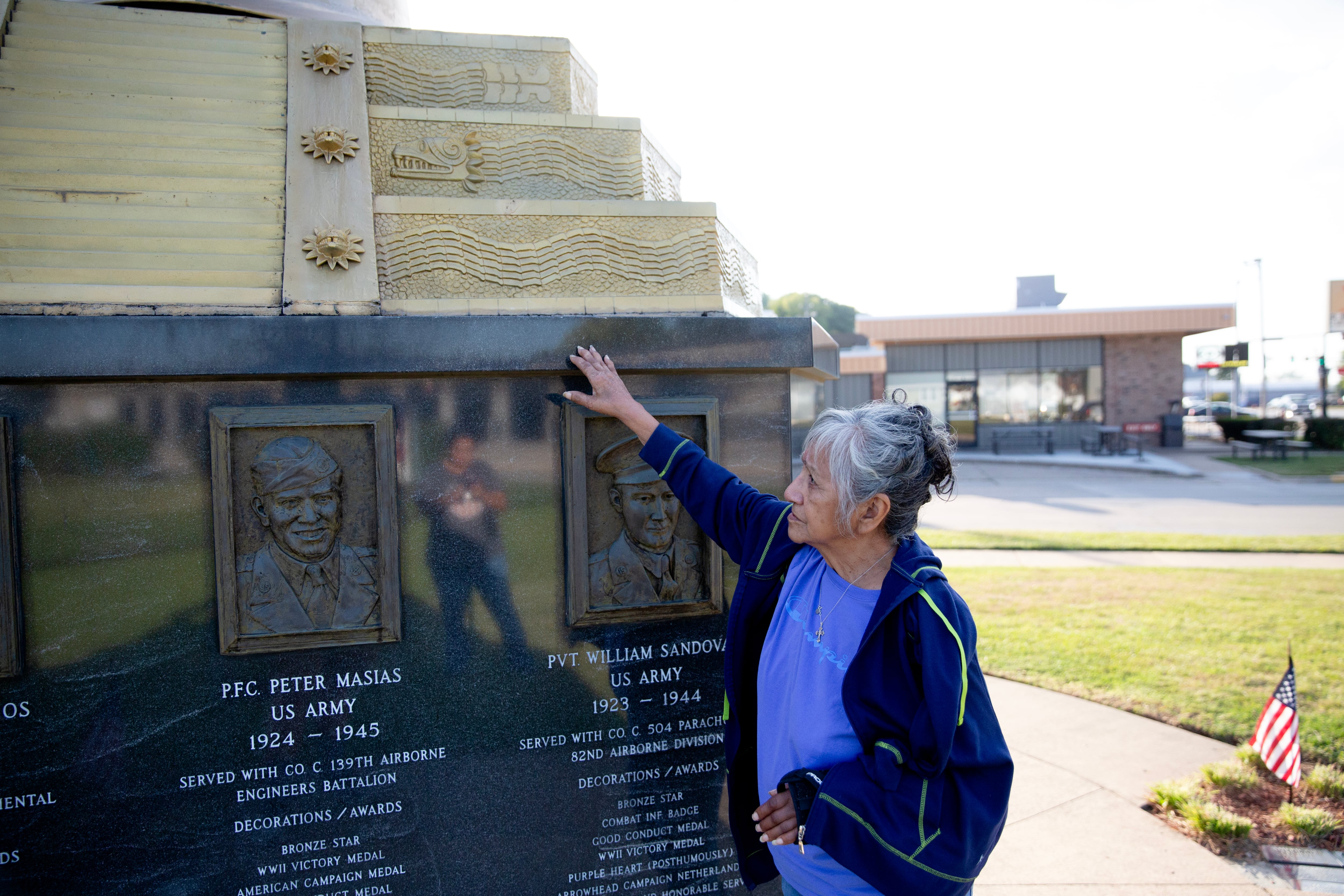
Joe eventually became the first Latino mayor elected in Silvis — and the state of Illinois — in 1989.
But tensions remained.
At one city council meeting in 2007, Alderman Bob Cervantes, 66, asked the council for a couple thousand dollars for “cosmetic” upgrades to the Hero Street park. Another alderman said he was tired of giving “you guys” — on one of the few predominantly Latino streets in the town — funding.
Cervantes shot back at the alderman.
“How can you say ‘you guys?’ These guys wore the same uniform as you guys,” Cervantes said, recounting the exchange.
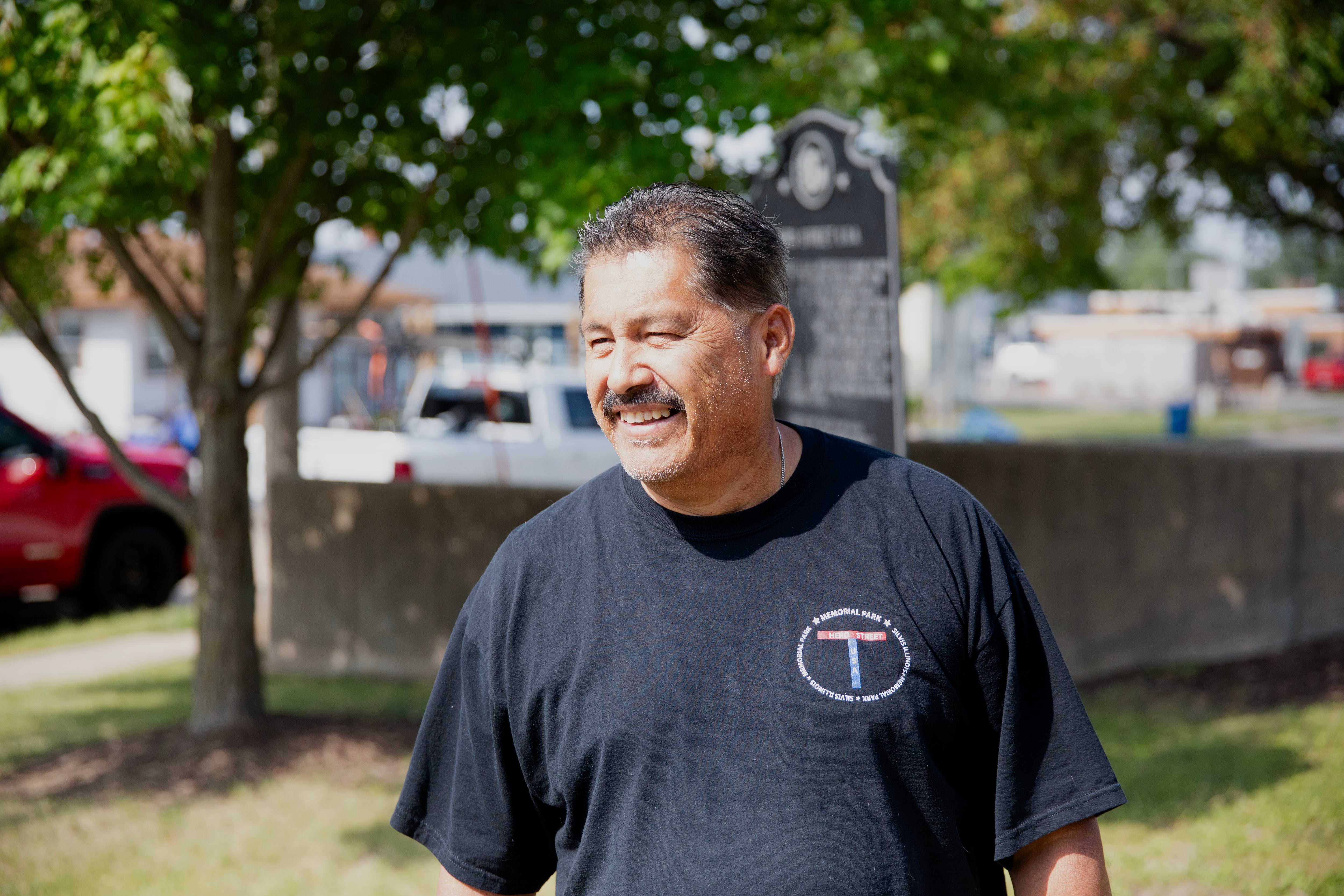
One day in 1984, Sonny Soliz attended a showing of a Hero Street documentary produced by Anheuser-Busch. He wondered how he could honor the sacrifice of his uncle and the other seven boys. That night, he couldn’t sleep.
So, the art teacher started sketching.
A monument could sit on a large, triangular block of granite. Bronze molds of the boy’s faces could hang on two of the sides, medals and recognitions etched into the granite.
To honor the boys’ Mexican heritage, a Mayan pyramid out of bronze would sit atop the granite. A classic Army helmet with a flag pole and an M1 rifle would rest on top of the Mayan pyramid. An American eagle, wings spread, would hold the top of the rifle and flag pole.
By the next morning, he had designed a monument for Hero Street.
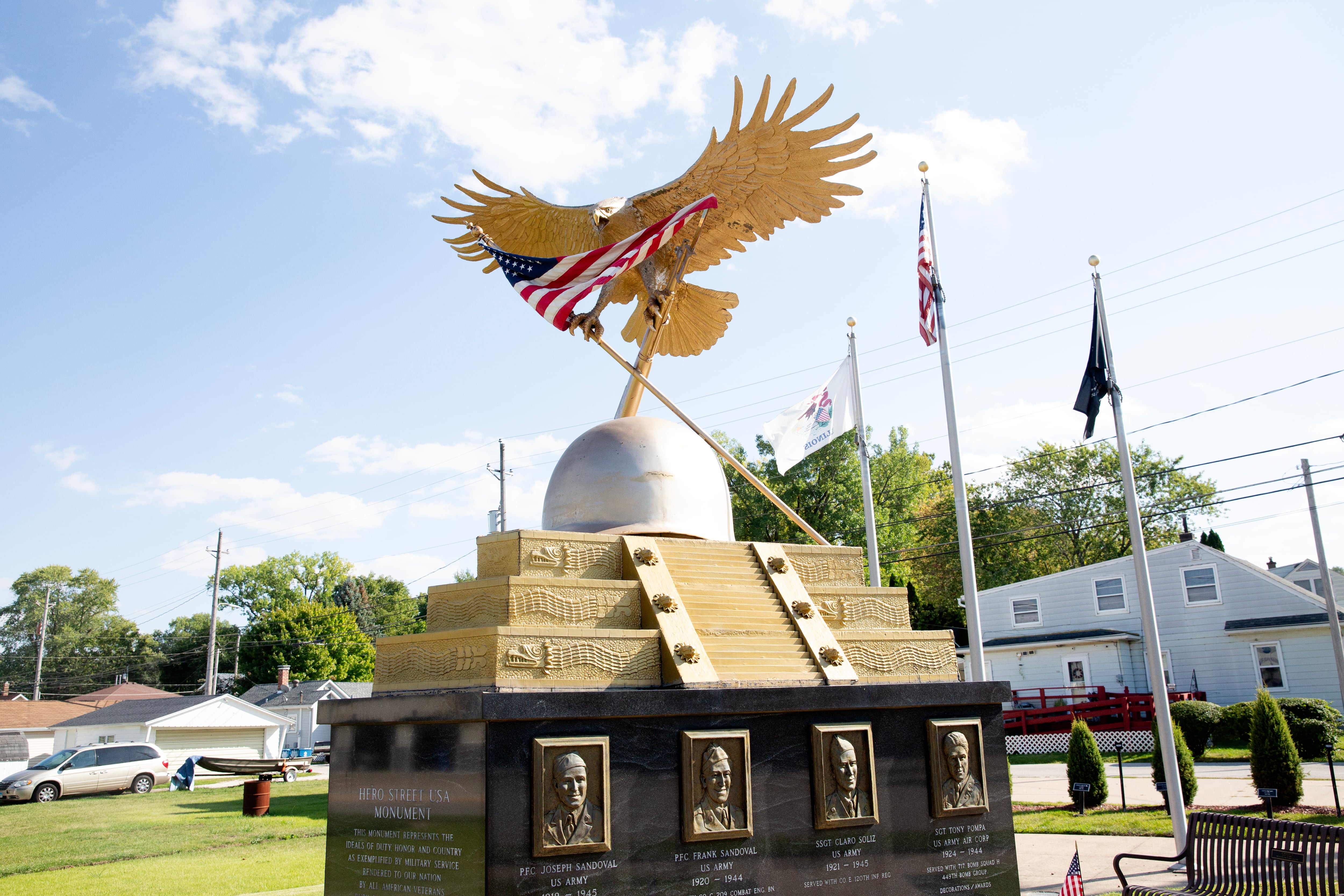
“I am a watercolorist,” Sonny said. “I do calligraphy, I sketch. I do not design monuments. But I believe in my heart that the good Lord allowed me to design that monument.”
Efforts to build the monument faced some opposition. The city council refused to give public dollars to the private project. Eventually, the state senator who represented Silvis helped a committee of community leaders secure a grant.
When the bronze molds were finished in Mexico and transported across the border, local labor unions volunteered the manpower to complete the monument.
After multiple trips to Mexico and $250,000 later, the committee unveiled the monument in 2007. Sonny’s late-night vision had become a reality.
“We were the underprivileged, we had name-calling and prejudice here and there,” Sonny said. “We had to prove ourselves that we are Americans, that we live here and we want to make this country the best country.”
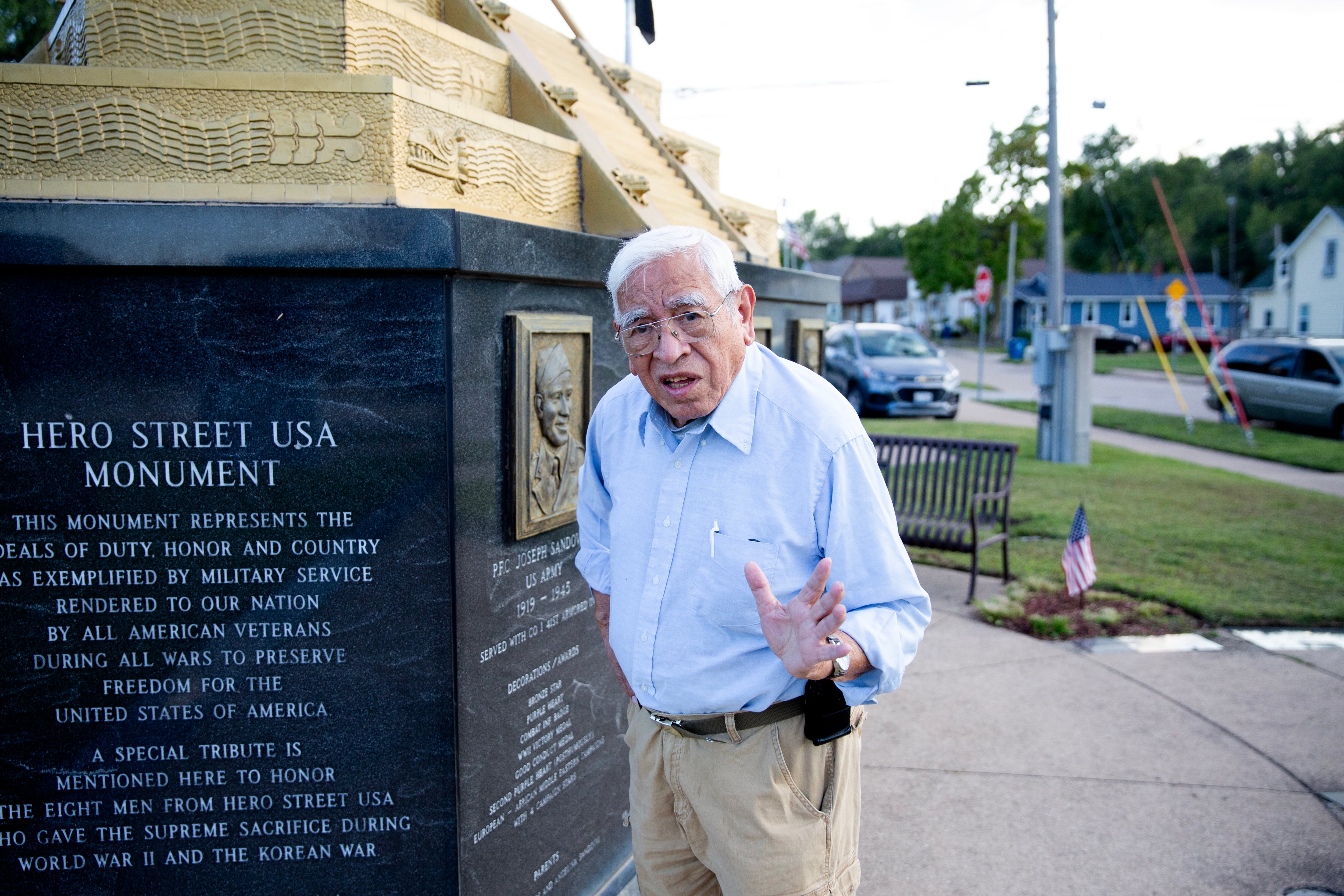
The Next Generation
Cars filled the parking lot in front of the park the day before Memorial Day in 2023, stretching the entirety of Hero Street. Tony’s Tortillas handed out bottled water and their signature chips for guests to eat. Elected officials and community members from across the region gathered.
More than 100 years after the families fled the revolution, Hero Street received its first visit from a Mexican government official.
Ambassador Reyna Torres Mendivil, the consul general of Chicago, laid a wreath at the monument and spoke at the park to commemorate Memorial Day.
Torres Mendivil also received a blessing from Brian Muños’ grandmother, Nellie. At 100 years old, Nellie Muños had blessed hundreds of people, from family to politicians. Most recently, she blessed Illinois Gov. J.B. Pritzker.
Soon after the ceremony, Torres Mendivil mentioned her mother was from León, Guanajuato.
The siblings of many of Hero Street’s original boys have passed away. Many of those siblings, nieces and nephews who remain, are at least 80 years old, many older than 90. While reporting this story, the centenarian Nellie Muños — blessing folks until her final days — died on Jan. 26 at her home on Hero Street.
Families grew and began new lives, pouring outside the confines of the old street. Details became foggy. Documents were lost in the shuffle as the original residents of Hero Street passed. New generations repeated the stories of their parents and grandparents, but with less experiential recollection and more settled recitation.
Time took its toll on Hero Street.
In November 2022, Frank Pompa, his wife and son drove to Hero Street. Passing Willie Sandoval’s home in disrepair, Pompa’s wife looked out the window. She said Willie’s mother, who had kept a tidy home, would be “beside herself” if she were alive to see the shape of the property.
The city of Silvis tore down the home last year.
Midwest snows and spring showers have faded the stars painted in front of each of the eight boys’ homes. The park, too, needs new street lights — and the city must address the shifting earth on the park’s hill, Cervantes said.
Hero Street in recent years, though, has found some renewed life.
Farm equipment manufacturer John Deere created and placed large steel stars set in concrete on the original yards of each of the eight boys’ homes in 2022.
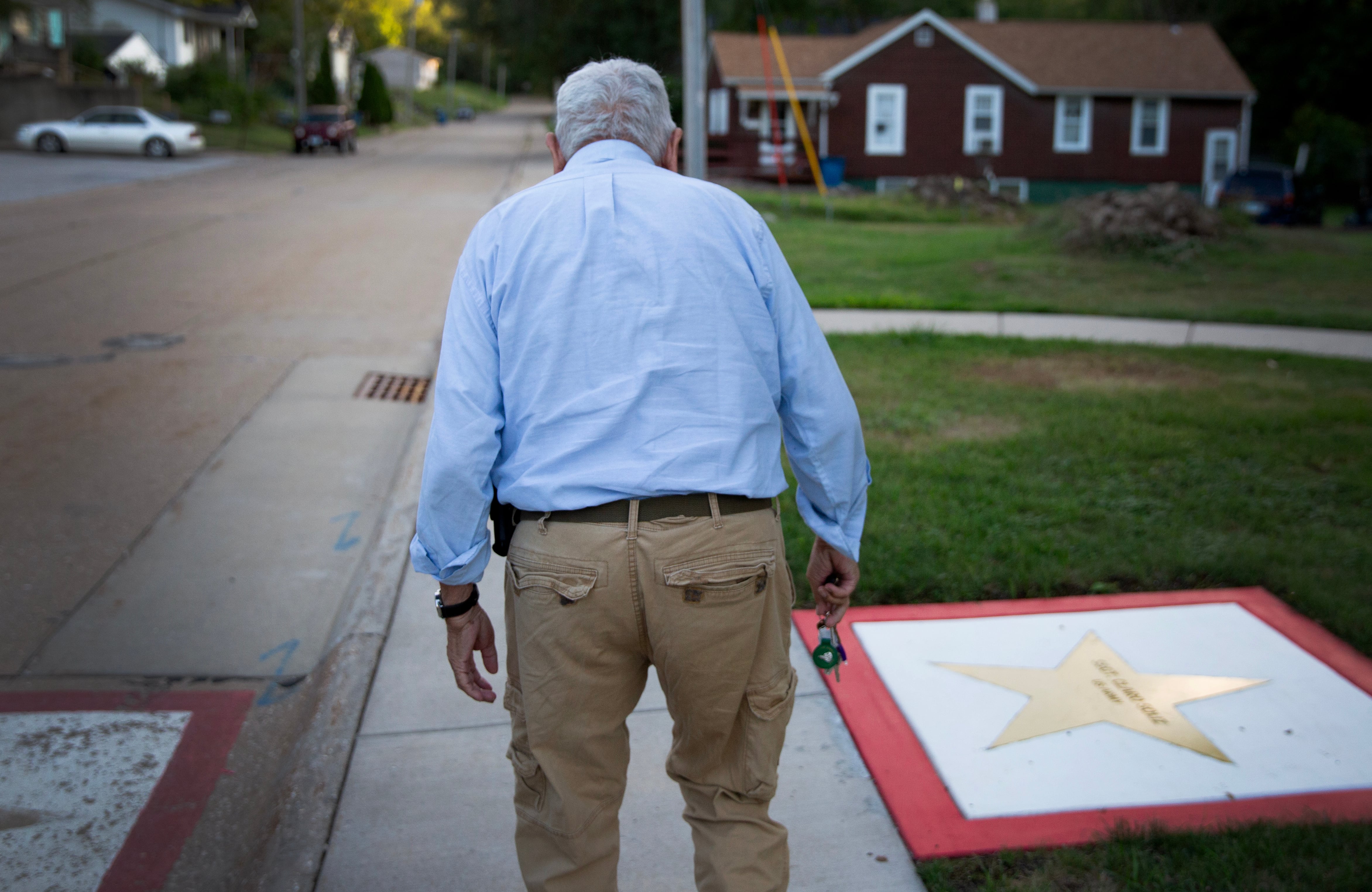
Relentless in his support for Hero Street, Cervantes returned to his old city council seat last year after a four-year hiatus from public service. He planned the first-ever Hispanic Heritage Month festival on the street last October.
“I don’t think the story will ever go away as long as there’s family members and the story can be handed down from them to the next generation,” Cervantes said.
The Hero Street story, too, shows the possibilities of a military that recruits people from all corners of the country, said Edward Cabrera, a retired Air Force colonel and a founder of the Hispanic Veterans Leadership Alliance.
“Who would have believed that we could tap into such a wellspring of patriotism from a single dusty street on the other side of the railroad tracks?” asked Cabrera. “This is what harnessing the talents of all peoples from even the most distant and unlikely corners of America looks like.”
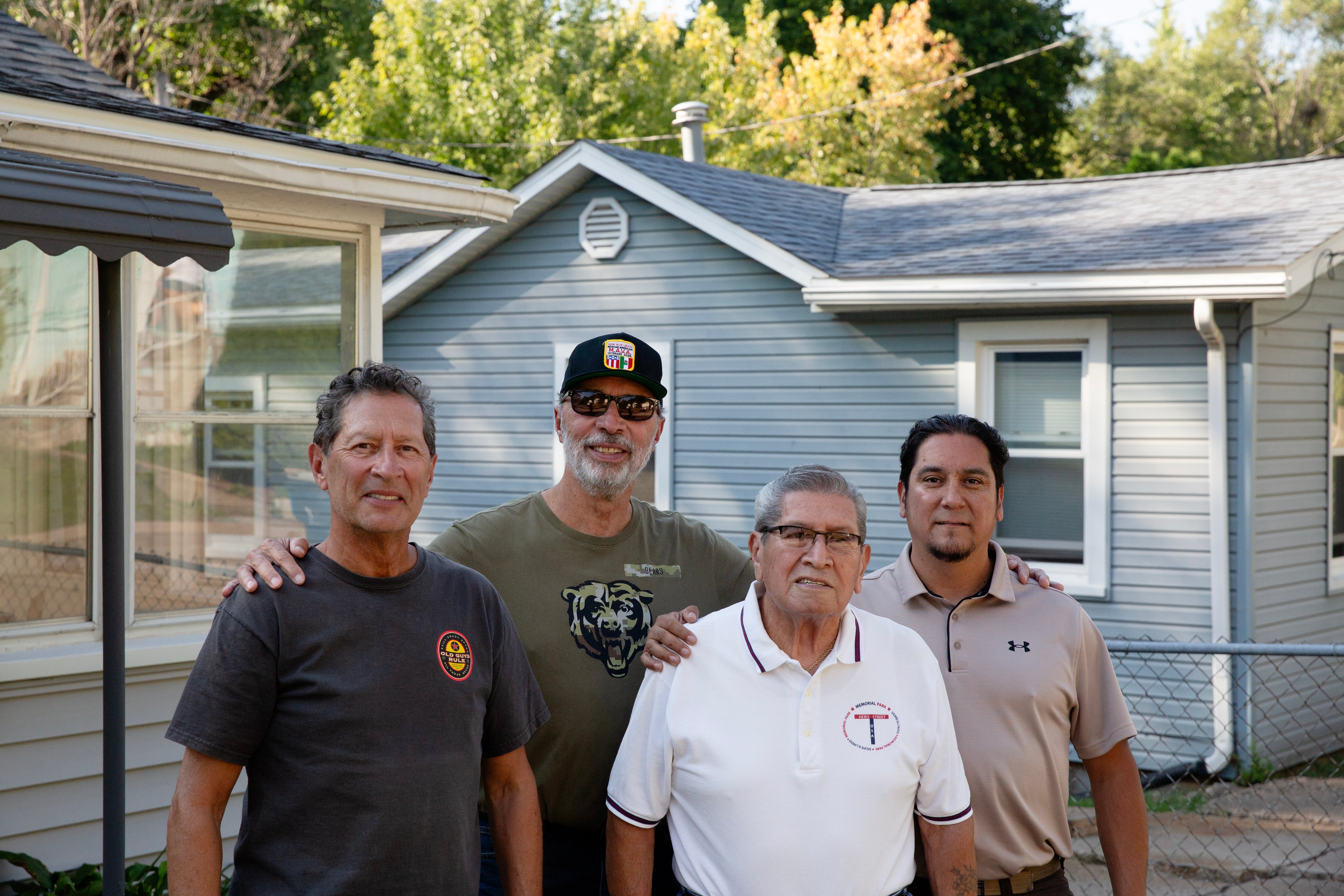
At dusk on a crisp November day in 2022, atop a hill on Hero Street, the steps were lined with American Flags, rolling in the wind, from the Veterans Day ceremony earlier in the week. There, a passage from scripture was inscribed onto the grotto that spoke of “no greater love than this.”
A train from la yarda, where the first families lived and labored, passed through Silvis. A few of the original boxcar homes the workers settled in after their journey to el norte stood below.
The sun quickly set.
Zamone “Z” Perez is a reporter at Military Times. He previously worked at Foreign Policy and Ufahamu Africa. He is a graduate of Northwestern University, where he researched international ethics and atrocity prevention in his thesis. He can be found on Twitter @zamoneperez.
